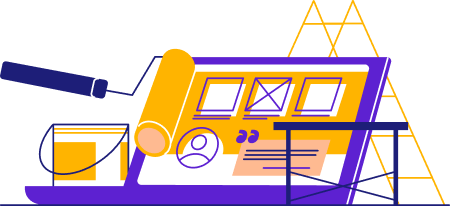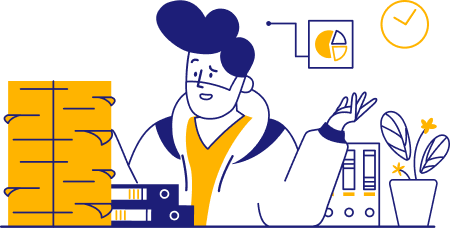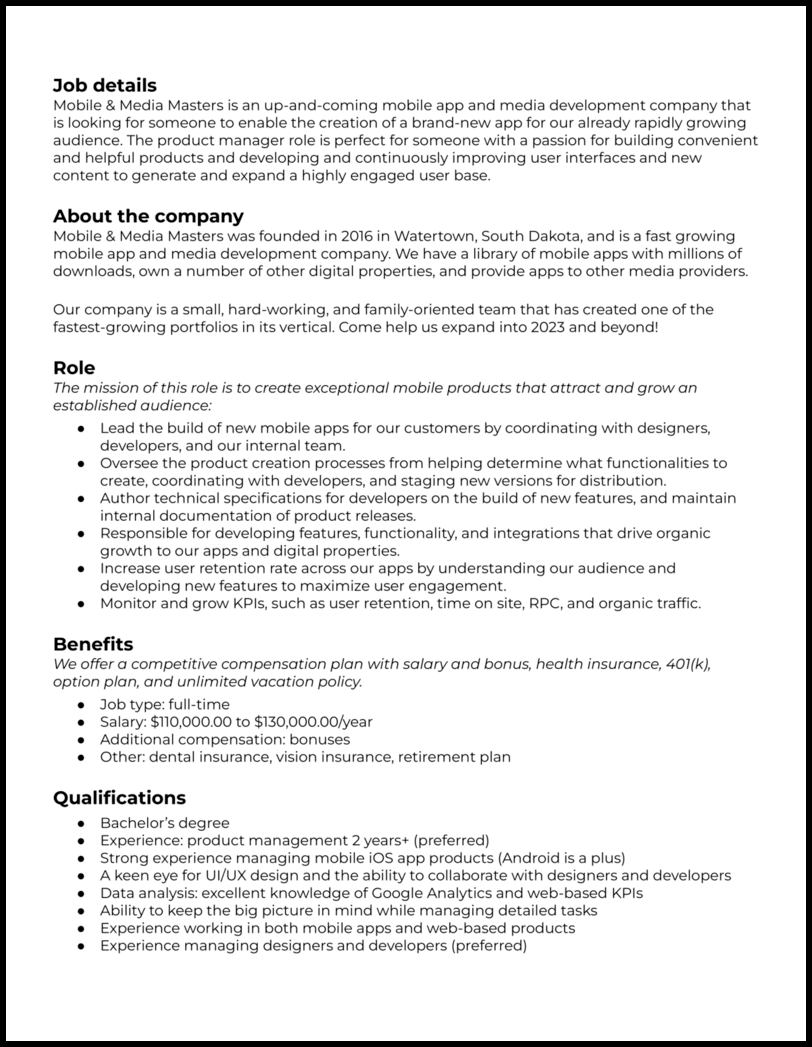A great product manager ensures the company’s products support the overall strategy and goals. They’re responsible for delivering a product to the target market that’s not only differentiated and addresses a customer need but can be supplied within a viable and profitable business model.
While we’ve got some awesome resume templates for job seekers, we think you’ll find these product manager job description templates just what you need. Finding the best product manager for your product is a tall order, but with our examples and advice on how to create excellent job listings, it won’t be any time at all before you’ll be looking at some great product manager cover letters and resumes.
How to Write a Product Manager Job Description

Creating an effective job description for a product manager can be challenging. The role is expansive, and it’s easy to get carried away writing a lengthy description of what you expect from your product manager. To make sure candidates read and comprehend, keep your post brief without missing key content.
Your job requirements should include critical success factors for the role, but you don’t want to have too many. Statistics demonstrate that having a long list of job requirements will discourage diverse candidates from applying. A long list of qualifications and requirements also increases the risk of including biased wording or language.
A product manager must manage complex activities simultaneously. They must quickly and efficiently identify key objectives and boil things down to critical path tasks. Your job description has to do the same. Being clear and concise is key.
Convey what a job or role encompasses by using examples of issues that your product manager needs to be able to solve. Use these questions to get started:
- What gaps does this hire need to fill?
- Why are you hiring in the first place?
- What current challenges do you need to address?
- Do you need to expand resources and/or capacities?
Your Product Manager Job Description Layout

Below is an outline that covers all the items for all product manager job descriptions:

Job details
This is where you sell the role and the organization. Briefly give the what and why of the job. Give candidates a taste of your company and remember the goal is to encourage them to join your team (not scare them away).

About the company
This is where you tell your audience what your company does and why they should want to work there, and while this information is, of course, important, what candidates really want to know is whether they can handle the requirements for the job.
Wherever you place this section, a product management professional is interested in knowing the company’s vision and mission. In a sentence or two, give job seekers a brief synopsis of what the company is trying to achieve and how the PM role fits in.

What you’ll be doing
You may also title this section “Roles,” “Responsibilities,” or “Requirements.” Provide a bulleted list of all the pertinent tasks that the job involves. If there is anything not typical for a product manager, then make sure to include that.
While you can’t list everything that happens in a day, list the major and crucial work. The best practice is to use active verbs, avoid jargon and filler, and be specific, like this.
- Lead the build of new mobile apps for our existing audience by coordinating with designers, developers, and our internal team.
- Oversee the product creation processes from helping to determine what functionalities to create, coordinating with developers, and staging new versions for distribution.
- Research current and future trends in the markets and make recommendations on strategic product lines (new and existing) and changes, additions, and removals.
- Lead the ideation and creation of new products focused on our target markets, or establish new ones.

Qualifications
Applicants will quickly determine whether they’re right for the job by reading this section. Include education, experience, and specialization requirements. Leverage applicable personality words such as “innovative,“ “self-motivated,” “organized,” and “dependable,” but be careful not to overuse them.
Product management has a lot of standard requirements, but it also covers a wide range of skill sets. Be sure this section contains any special and non-standard qualifications your company may require. As with every section of your job description, be brief and clear.
- Bachelor’s degree
- 5+ years of product management
- 5+ years of technical development experience
- Project management experience
- Extensive experience developing products and managing the product life-cycle
- Strong data analysis and analytical skills

Benefits
Place this anywhere in the middle sections of your product manager job ad. Placing this section higher up may be a good idea if you want to stress the benefits your organization offers. Include anything that differentiates your company’s benefits from others.
Product Manager Responsibilities

A product manager wears a lot of different hats. Below, we’ve provided some key things a product manager might do for your company and are what you need to advertise as part of the role to ensure you get the best product manager resumes, product manager cover letters, applications, and, ultimately, the best candidate for the job.

Concept
A product manager works at a conceptual level to create new products and develop enhancements and improvements to existing products. Product managers must be able to come up with and work with ideas starting at a high level and then methodically distill them into tangible and workable designs.
- Collaborate with designers and others during the ideation phase, and thoroughly document resulting proposals for review by engineers and management.
- Think critically about product ideas and be able to assess and quantify strengths, weaknesses, and opportunities posed by new designs and products.

Vision
The product management function helps to define the product vision. This provides guidance and guard rails to keep the creative processes within feasible limits and ensures that proposed projects and products support the business strategy.
- Provide the overarching direction and clearly communicate the organizational goals and objectives to keep all efforts on track.
- Keep the team together, positive, productive, and focused on key objectives during work sessions and meetings.

Define success
A product manager must not only have a solid understanding of what a successful product does but be able to outline what success looks like and explain this to others.
- Author and maintain documentation that clearly defines the product’s goals and objectives, including KPIs that can be easily used to objectively measure success.
- Partner with the business and product owners to ensure that all development and operational efforts are supporting the success of the products.

Ownership
A key to any successful product or process is having a strong leader who takes full accountability for the business results of the product or product line. This is a key role that the product manager must fill.
- Own the vision for product(s) from ideation to retirement (full product life cycle).
- Lead marketing efforts and work with creative teams to develop campaigns that build and cultivate customers and sales revenue.
- Guide all efforts that drive production, sales, and support to maximize ROI.

Stakeholder management
The product manager must have outstanding communication and negotiation skills and must be responsible for working with outside stakeholders.
- Negotiate with vendors who provide products and services to create your products.
- Communicate with suppliers who deliver the materials and components that are needed to produce your product lines.
- Engage with customers to gain feedback and insights on products’ effectiveness and fitness for purpose/use.

Collaborate with the product owner
The product owner is accountable for overseeing the operational tasks and execution of initiatives for products. The product manager oversees and drives the higher-level strategic and planning activities but closely supports the product owner in day-to-day efforts.
- Assist with communication and collaboration with internal stakeholders.
- Directly work with the product owner on the execution of the product vision.
- Collaborate on plans for achieving success.
- Enable task completions and prioritization of backlog work.
- Support and facilitate all daily activities as needed by the product owner.








